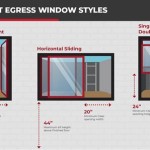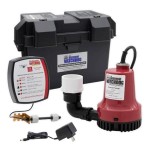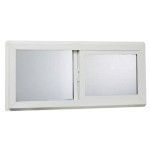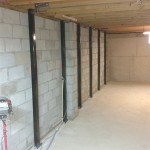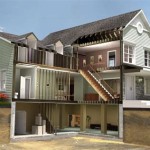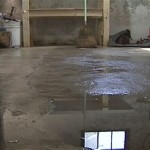What Are Small Basement Windows Called?
Basement windows play a crucial role in providing natural light and ventilation to subterranean spaces. However, not all basement windows are created equal. Small basement windows serve a distinct purpose and have a specific name. Here's a comprehensive guide to the types and functions of small basement windows.
Hopper Windows
Hopper windows are a common type of small basement window. They hinge at the bottom and open inward, creating a hopper-like opening. This design allows for easy ventilation and can also be used as an escape hatch in case of emergencies. Hopper windows are typically installed near the floor level and are often paired with larger windows to provide additional light and airflow.
Casement Windows
Casement windows are another popular choice for small basement windows. They hinge on one side and open outward, allowing for a wider opening than hopper windows. Casement windows provide excellent ventilation and are easy to clean from the inside. However, they require more clearance space than hopper windows and may not be suitable for tight spaces.
Awning Windows
Awning windows hinge at the top and open outward, forming an awning over the window opening. They are ideal for areas where rain or snow may enter the window, as the awning helps to deflect water away from the opening. Awning windows also provide good ventilation and can be left open during inclement weather.
Sliding Windows
Sliding windows are a space-saving option for small basement windows. They consist of two or more panels that slide horizontally to open and close. Sliding windows are easy to operate and provide good ventilation, but they may not be suitable for areas where the window opening is limited.
Fixed Windows
Fixed windows, also known as picture windows, are non-operable windows that provide natural light without allowing for ventilation. They are a good choice for small basement windows in areas where ventilation is not a concern, such as storage rooms or utility spaces.
Factors to Consider When Choosing Small Basement Windows
When choosing small basement windows, it's important to consider several factors, including:
- Purpose: Determine whether the window is needed for ventilation, natural light, or both.
- Space: Measure the available space to determine the appropriate window size and type.
- Location: Consider the location of the window in relation to potential water sources and whether an escape hatch is required.
- Style: Choose a window style that complements the overall design of the basement.
- Budget: Set a budget for the window and compare different options to find the best value.
Conclusion
Small basement windows serve a variety of purposes and come in different types, including hopper, casement, awning, sliding, and fixed windows. By considering the factors discussed above, homeowners can select the most suitable small basement windows for their specific needs and preferences, ensuring proper ventilation, natural light, and a comfortable living environment in their subterranean spaces.

What Are Egress Windows Pella Branch

Basement Egress Window Cost And Installing An

Hopper Windows 2024 Buying Guide Modernize

What Is A Hopper Window And How Are They Used In Homes

How To Install A Basement Egress Window Acculevel

What Is A Hopper Window And How Are They Used In Homes

Durable Basement Window Wells For Enhanced Light And Safety

Energy Efficient 5600 2200 Basement Windows All Weather

Basement Egress Window Cost And Installing An

What Is A Hopper Window And How Are They Used In Homes
